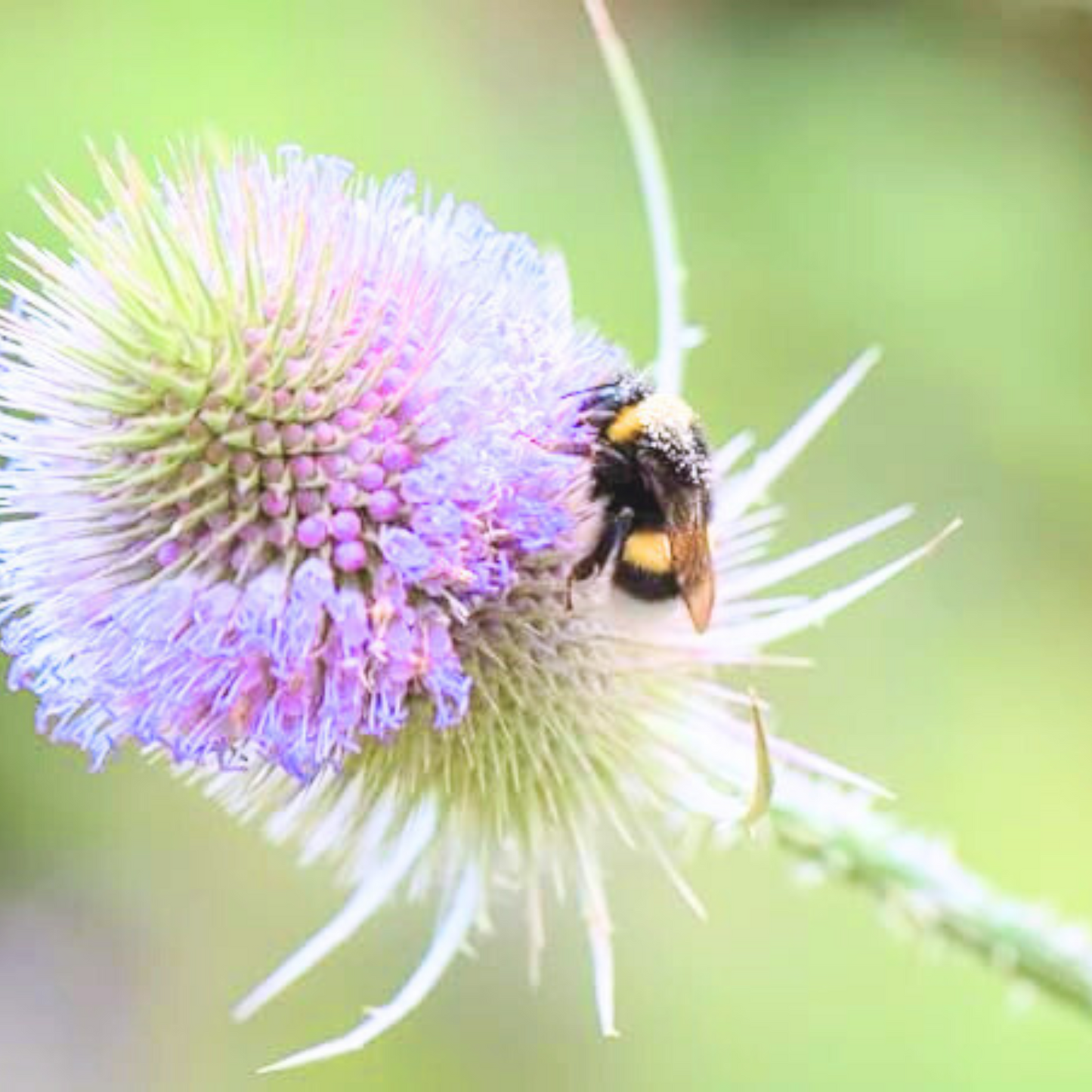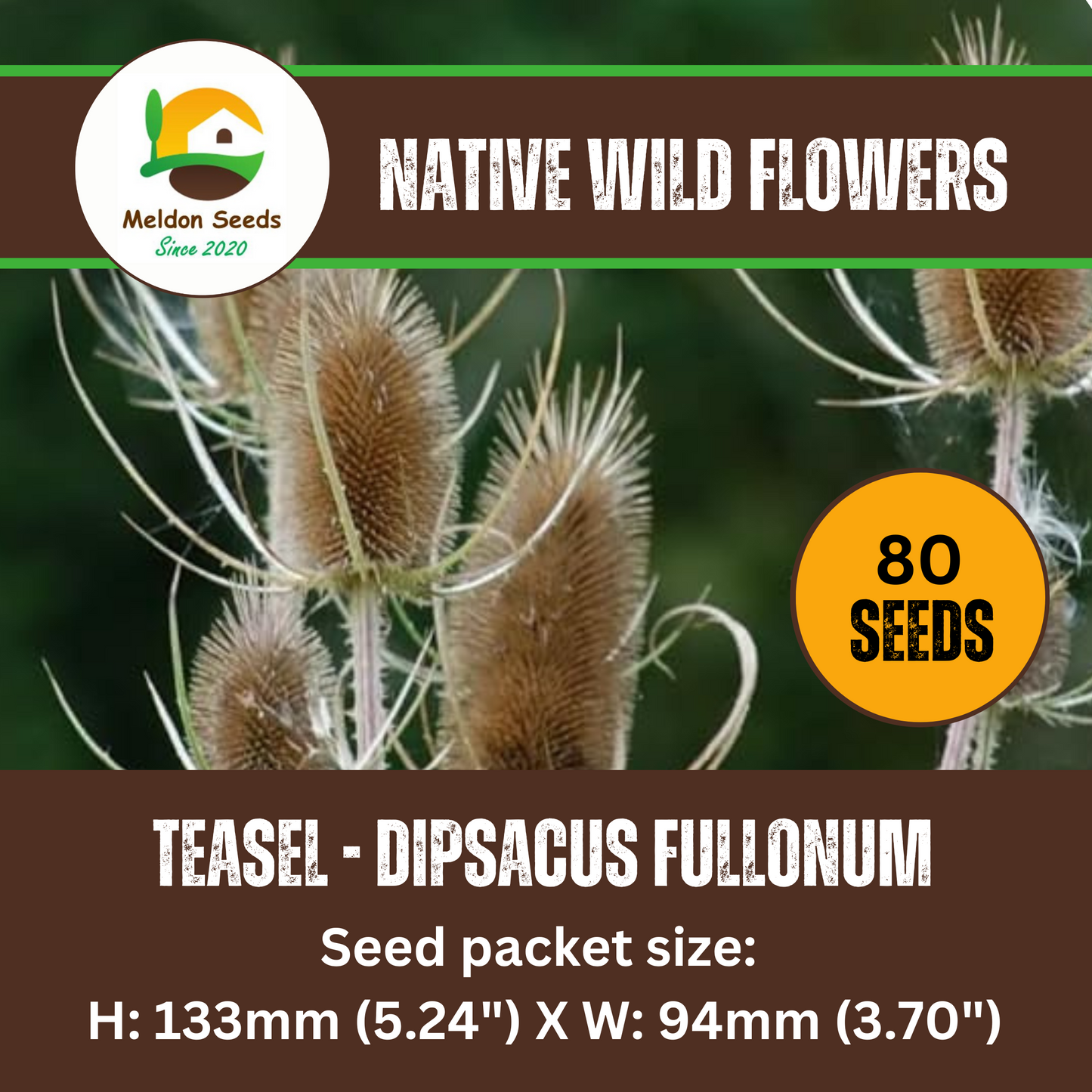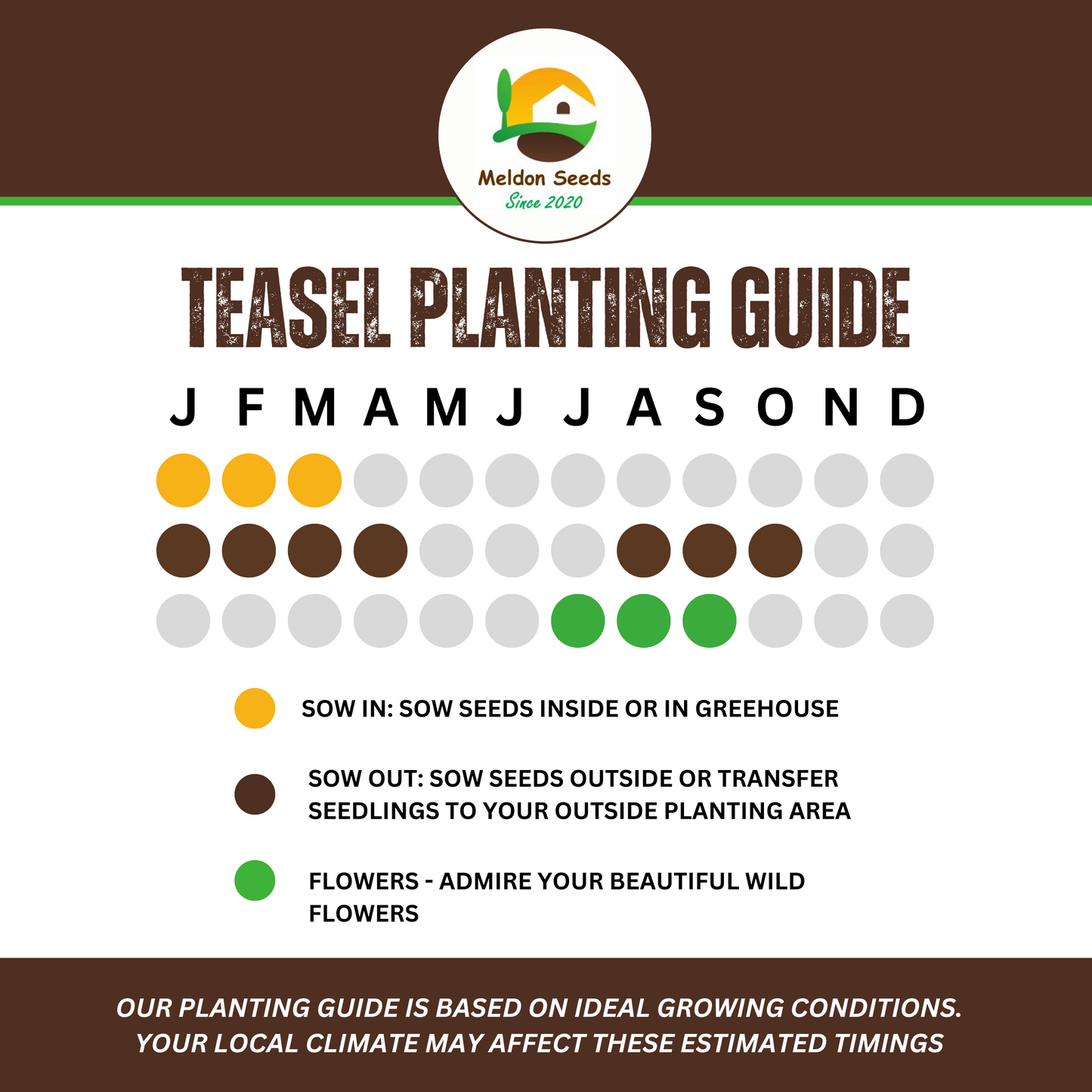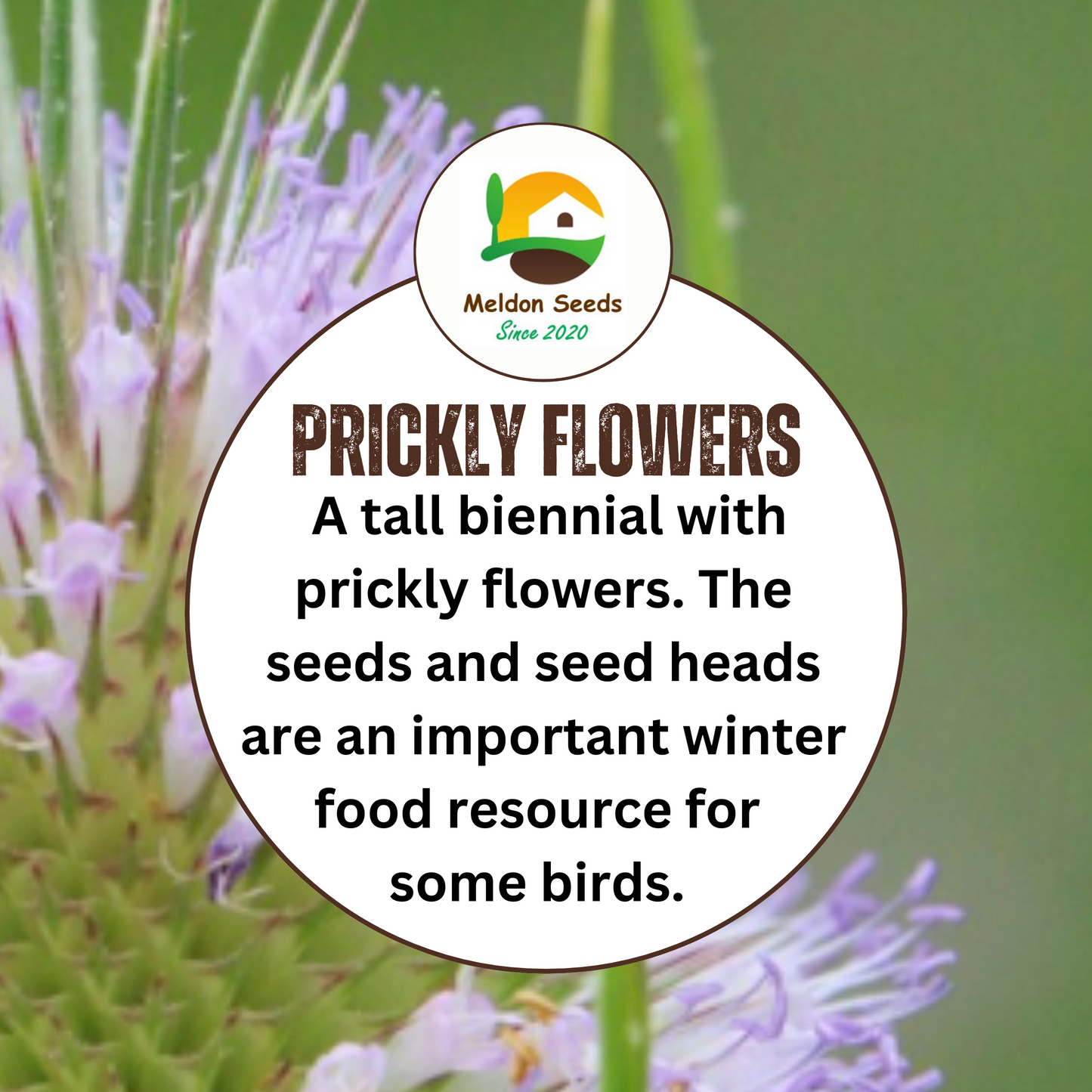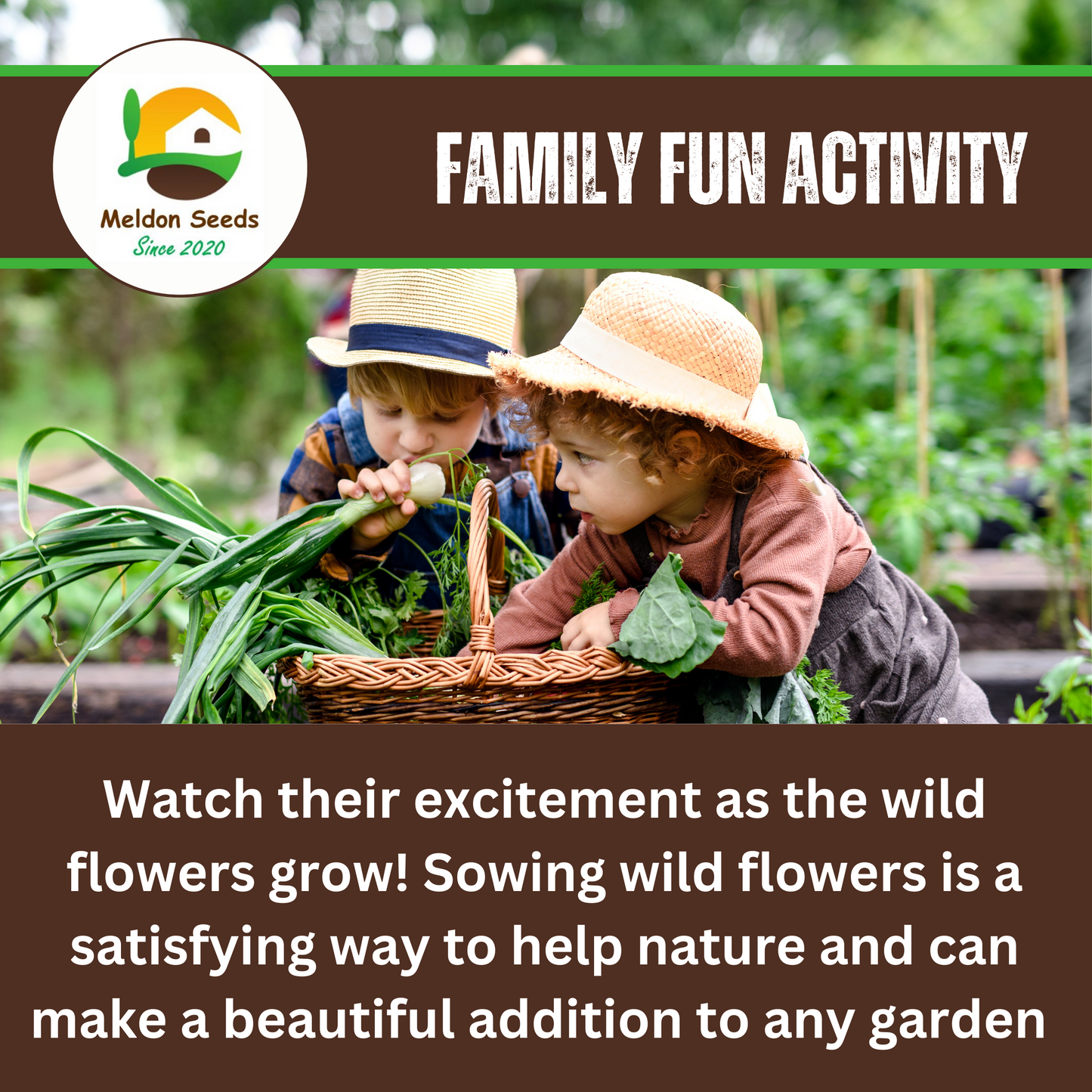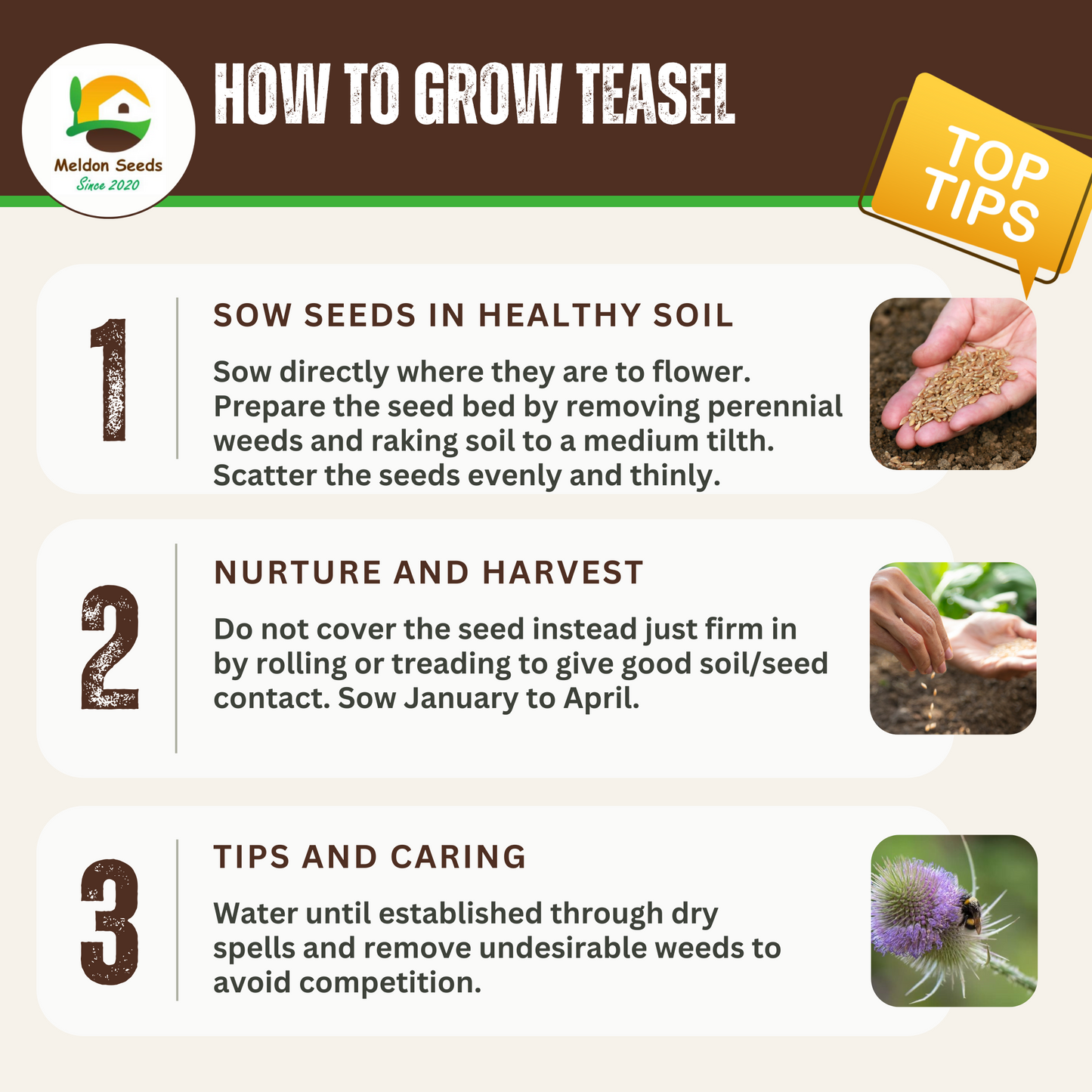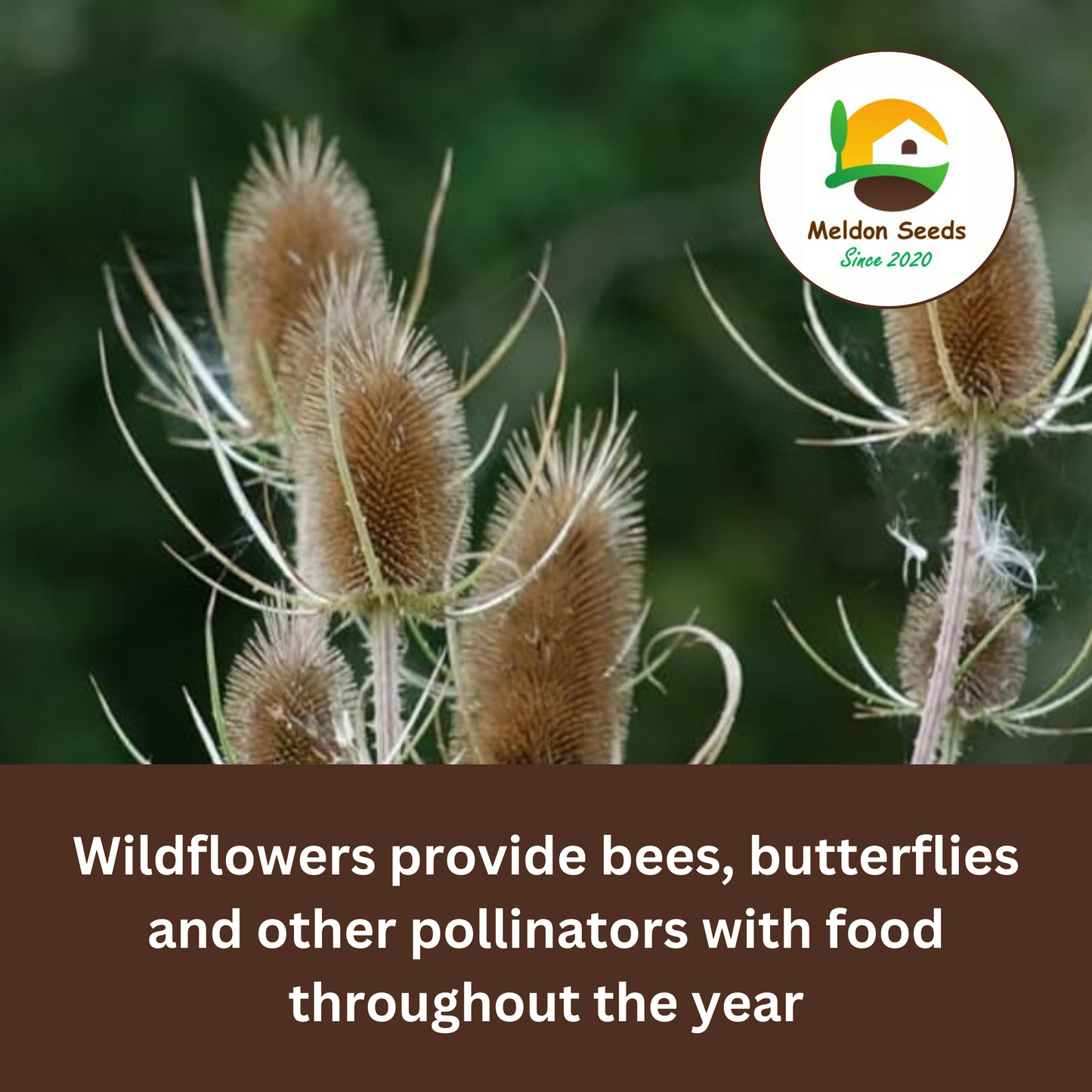Meldon Seeds
Teasel Seeds - 80 Native UK Wild Flower Seeds for Attracting Birds, Bees, Wildlife, Pollinators, Suitable for Planting and Growing Outdoors in Meadows, Fields, Gardens and Borders by Meldon Seeds
Teasel Seeds - 80 Native UK Wild Flower Seeds for Attracting Birds, Bees, Wildlife, Pollinators, Suitable for Planting and Growing Outdoors in Meadows, Fields, Gardens and Borders by Meldon Seeds
Couldn't load pickup availability
Teasel: Commonly known as Wild Teasel or Fuller’s Teasel, The seeds and seed heads are an important winter food resource for some birds. Teasels are a fantastic wildflower plant often grown in gardens and deployed on some nature reserves to attract various birds and other wildlife.
Sow January to April and August to October.
Flowers July to September.
Packet size 80 seeds approximately
ATTRACT BIRDS AND BEES TO YOUR GARDEN: Sowing Native Wild Flowers is a great way to attract beneficial insects and pollinators to your garden, allotment or field while also provide a food source for birds and other wildlife. The height of this ornamental plant means the conical structure can add height and interest to any plant displays. A biennial plant, teasels are mid to late summer flowering.
HOW TO PLANT: Teasel germinates easily and is best sown where you want it to grow from January to April. However you can so into pots or seed trays to plant out later, just bear in mind that teasel rapidly develops deep roots, so plants must go into their final growing position when young, otherwise the roots become restricted and growth is stunted. Plant out as soon as they are large enough to handle, 45-60cm apart and keep watered until established. Flowers: July-September, the following year.
TOP GROWING TIPS: Grow teasel in an informal site with plenty of space for the large plants to develop. Sow seed in spring or autumn or plant when small in summer. Allow to self-seed if the site suits, then remove dead stems at the end of winter. This plant can grow to reach 3m in height.
GO BACK TO YOUR ROOTS: Planting wild flowers is a wonderful way to spend time in your garden, cultivate mindfulness and appreciate the little things just like in years gone by. Working with the earth and growing things is immensely satisfying – teach your children or grandchildren this priceless skill of harvesting food in their own gardens, allotments, greenhouses, inside the home in pots or even in community gardens!
Share
